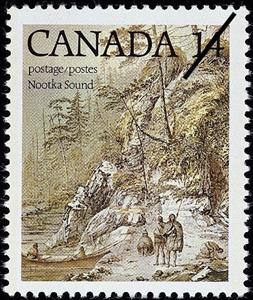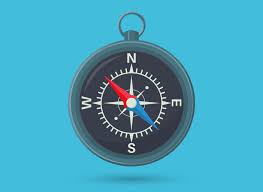Stamp: Nootka Sound (J. Webber) (Canada 1978)
Nootka Sound (J. Webber) (Canada 1978)
26 April (Canada ) within release Captain James Cook goes into circulation Stamp Nootka Sound (J. Webber) face value 14 Canadian cent
| Stamp Nootka Sound (J. Webber) in catalogues | |
|---|---|
| Michel: | Mi:CA 688 |
| Stamp Number: | Sn:CA 764 |
Stamp is vertical format.
Also in the issue Captain James Cook:
- Stamp - Capitain Cook (Nathaniel Dance) face value 14;
- Stamp - Nootka Sound (J. Webber) face value 14;
- Se-tenant - Nootka Sound / Captain Cook face value 2*14;
|
Data entry completed
83%
|
|
|---|---|
| Stamp Nootka Sound (J. Webber) in digits | |
| Country: | Canada |
| Date: | 1978-04-26 |
| Size: | 30 x 36 |
| Perforation: | 13½ |
| Format: | Stamp |
| Face Value: | 14 Canadian cent |
| Print run: | 15675000 |
Stamp Nootka Sound (J. Webber) it reflects the thematic directions:
A landscape is the visible features of an area of land, its landforms and how they integrate with natural or man-made features. A landscape includes the physical elements of geophysically defined landforms such as (ice-capped) mountains, hills, water bodies such as rivers, lakes, ponds and the sea, living elements of land cover including indigenous vegetation, human elements including different forms of land use, buildings and structures, and transitory elements such as lighting and weather conditions. Combining both their physical origins and the cultural overlay of human presence, often created over millennia, landscapes reflect a living synthesis of people and place that is vital to local and national identity. The character of a landscape helps define the self-image of the people who inhabit it and a sense of place that differentiates one region from other regions. It is the dynamic backdrop to people’s lives. Landscape can be as varied as farmland, a landscape park, or wilderness. The earth has a vast range of landscapes, including the icy landscapes of polar regions, mountainous landscapes, vast arid desert landscapes, islands and coastal landscapes, densely forested or wooded landscapes including past boreal forests and tropical rainforests, and agricultural landscapes of temperate and tropical regions.
A navigator is the person on board a ship or aircraft responsible for its navigation. The navigator's primary responsibility is to be aware of ship or aircraft position at all times. Responsibilities include planning the journey, advising the ship's captain or aircraft commander of estimated timing to destinations while en route, and ensuring hazards are avoided. The navigator is in charge of maintaining the aircraft or ship's nautical charts, nautical publications, and navigational equipment, and they generally have responsibility for meteorological equipment and communications. With the advent of satellite navigation, the effort required to accurately determine one's position has decreased by orders of magnitude, so the entire field has experienced a revolutionary transition since the 1990s with traditional navigation tasks, like performing celestial navigation, being used less frequently. Using multiple independent position fix methods without solely relying on electronic systems subject to failure helps the navigator detect errors. Professional mariners are still proficient in traditional piloting and celestial navigation.


